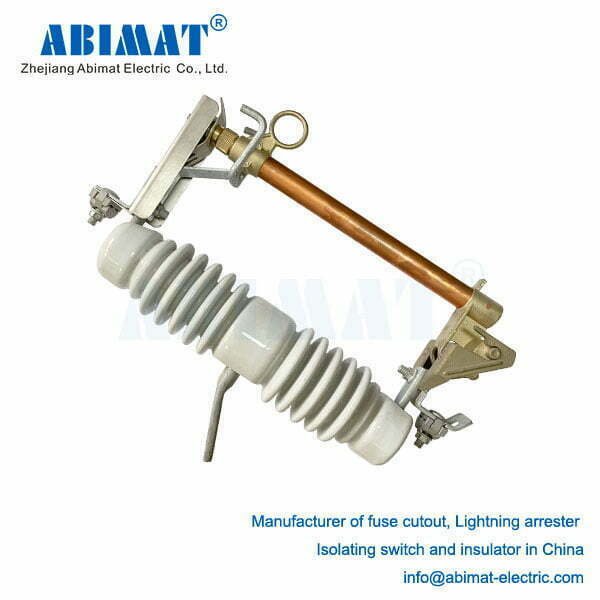Fuse Cutout Covers: Core Functions in Distribution Systems
The Fuse cutout is a vital, self-contained protective device predominantly used on overhead medium-voltage (MV) distribution networks (e.g., 11kV, 33kV). Its primary fungsi (functions) are overcurrent protection and safe, visible isolation, ensuring system safety, reliability, and maintainability.
I.Overcurrent and Fault Protection:
Sacrificial Element: The core component is a precisely calibrated fuse link within a removable carrier. Under normal load current, it remains intact.
Abnormal Current Response:
Sustained Overloads: Current exceeding the fuse’s continuous rating for a sufficient duration causes the link to melt via Joule heating, protecting downstream equipment (e.g., transformers, cables) from thermal damage.
Short Circuits: Extremely high fault currents cause near-instantaneous melting of the fuse link.
Selective Coordination: Cut-outs are selected based on time-current characteristics (TCC) to coordinate with upstream devices (reclosers, breakers) and downstream fuses. This ensures the device closest to the fault operates first, minimizing outage impact and maintaining supply to healthy sections.
II.Visible Open Isolation:
Drop-Out Mechanism: Following fuse operation, an internal release mechanism allows the fuse carrier (or “door”) to pivot downward under gravity.
Clear Visual Indication: This dropped-open position provides linemen with unambiguous, immediate visual confirmation that:
The circuit downstream is electrically isolated from the live upstream section.
A fault or persistent overload has occurred on the protected circuit segment.
It is safe (after proper de-energization verification and grounding procedures) to approach the downstream equipment for repair or fuse replacement.
Lockout Capability: Many designs allow locking the carrier in the open position during maintenance (Lockout/Tagout – LOTO).

Operational Principle & Key Features:
Interruption: The fuse link melts within a sealed tube, often filled with arc-quenching sand (silica). The sand rapidly cools and de-ionizes the plasma arc, safely interrupting the current.
Robust Enclosure: Housed within durable, weatherproof insulators (porcelain or polymer), designed for harsh outdoor environments (UV, rain, pollution, temperature swings).
Ease of Operation: Allows linemen using insulated hot sticks to safely open (unload only) or close the cut-out, and easily replace the fuse carrier once the fault is cleared.
Interrupting Rating: Rated to safely clear fault currents up to a specified maximum value (kA) without rupture.
Primary Applications:
I. Distribution Transformer Protection: The most common use. Installed on the primary (HV) side of pole-mounted or pad-mounted transformers, protecting them from internal faults and secondary-side faults.
II. Lateral Feeder Protection: Sectionalizing distribution feeders, isolating faults on branch lines (laterals) to minimize disruptions on the main feeder.
III. Capacitor Bank Protection: Isolating faulty units in pole-mounted capacitor banks.
IV. Service Entrance Protection: For larger overhead commercial or industrial services.
Critical Safety & Operational Aspects:
NO Load Switching: Cut-outs are not designed to interrupt normal load currents. They must only be operated (opened/closed) when the circuit is de-energized or carrying negligible current.
Visual Verification: The dropped carrier is the primary safety indicator; remote status signals are supplementary.
Correct Rating: Using the manufacturer-specified fuse link rating is essential for proper protection and coordination.
Regular Inspection: Essential to check for insulator damage, corrosion, contamination, and ensure smooth carrier operation.
Conclusion
The Abimat Fuse Cutout fulfills two indispensable fungsi in MV overhead networks: reliable overcurrent protection to safeguard equipment and limit fault impact, and fail-safe visible isolation enabling safe maintenance and rapid restoration. Its simplicity, durability, clear visual status indication, and ease of fuse replacement make it a cornerstone of distribution system safety, reliability, and operational efficiency.


